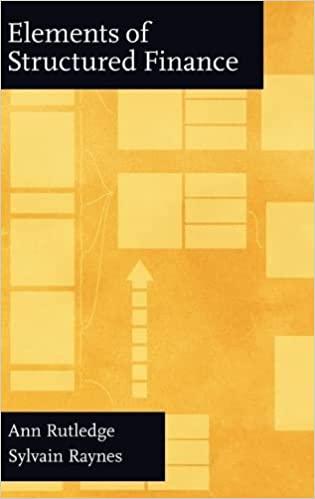1. Definitions: a. What does PAC stand for? b. What does TAC stand for? c. How is...
Question:
1. Definitions:
a. What does PAC stand for?
b. What does TAC stand for?
c. How is the P in PAC implemented, and where can you find it?
d. Why would anyone buy a PAC bond?
e. PAC bonds usually come in pairs. Please name the two members of the pair.
f. What types of risk is the PAC designed to address?
g. What is a PAC IO?
h. What types of risk faces the holder of an IO in general?
i. How does one define the PAC bond? How does the PAC bond address the risk of the PAC IO holder?
j. Derive the equation for the time-dependent principal balance of the second member of the PAC pair?
k. How are the two members of the pair related to the pool balance?
l. How do the plan in the PAC and the two constituents interact?
m. What is the PAC band, and how is it defined?
n. Under how many prepayment regimes can a PAC conceivably operate?
o. Describe each prepayment regime that you have identified, and discuss its impact on the PAC bond.
p. What happens to the cash flows allocated to the PAC bondholder when prepayments fall within the PAC band?
q. How does the PAC band affect the current duration of a mortgage-backed security?
r. Are prepayment speeds outside the PAC band commonly seen?
s. Does the standard PAC have a pro rata or a sequential payment regime?
Explain your answer.
t. Are there other types of PAC beyond the plain-vanilla ones?
u. What is a PAC Group? What is the idea behind a PAC Group? Why would anyone conceive such an animal?
v. Develop a formula for the second member of the PAC Group similar to the one you derived earlier with respect to the ordinary PAC concept.
w. How are PAC Groups linked to the prepayment dynamics of structured pools?
2. What is the economic usefulness of CMO structures described in this chapter:
PACs, PAC IOs, PAC Groups? What are the limits to the usefulness of such structures? What is the difference between a PAC and a TAC? Based on your definition, which of the two should be more costly to the investor?
Step by Step Answer:

Elements Of Structured Finance
ISBN: 9780195179989
1st Edition
Authors: Ann Rutledge, Sylvain Raynes






